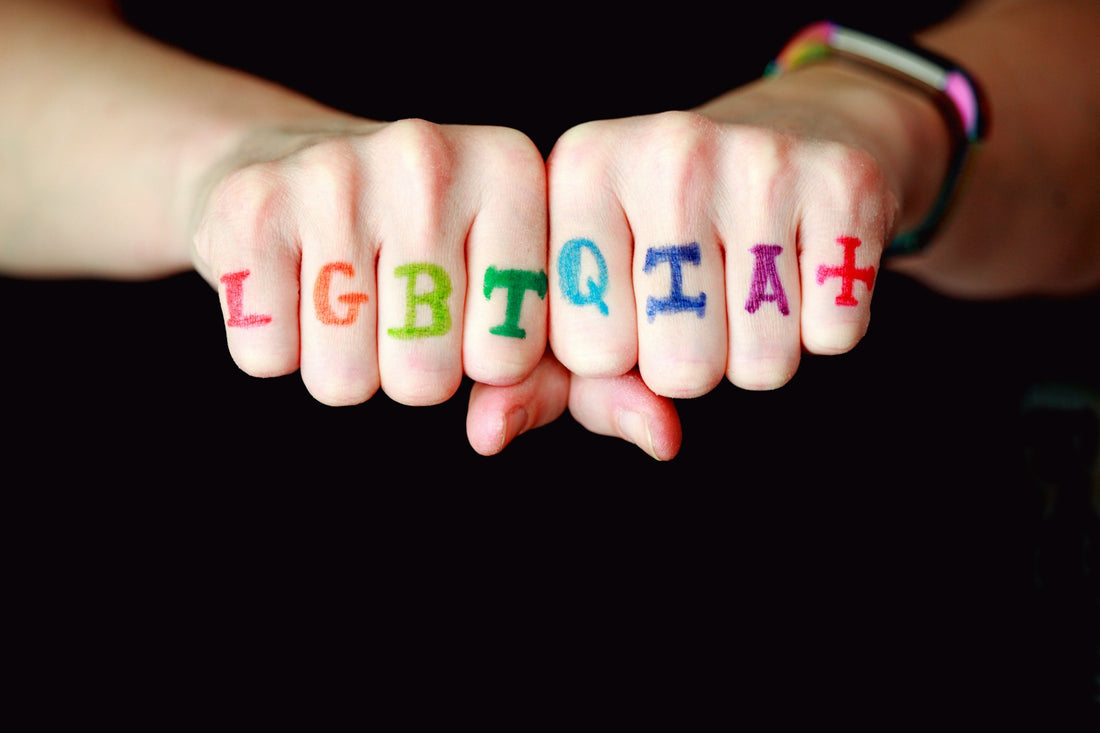
The LGBTQIA+ Movement: History - Significance and Current Issues
Introduction
The LGBTQIA+ movement (Lesbian, Gay, Bisexual, Transgender, Queer, Intersex, Asexual, and other gender identities and sexual orientations) is a broad set of social struggles that aims to achieve equal rights, recognition, and acceptance for people whose gender identity or sexual orientation differs from majority norms.
Here is an overview of its history, meaning and issues
current.
current.
History of the LGBTQIA+ Movement The Beginnings (before the 1900s)
The history of sexual and gender minorities goes back well before modern movements. In ancient cultures like Greece or Rome, same-sex relationships were sometimes accepted or tolerated.
But this acceptance was not universal. With the emergence of monotheistic religions (notably Christianity and Islam), homosexuality was often condemned, leading to the marginalization and criminalization of same-sex relationships in many societies.
The First Revolts (end of the 19th century - beginning of the 20th century)
The modern LGBTQIA+ rights movement began to take shape in the late 19th and early 20th centuries, with figures like Magnus Hirschfeld, a German sexologist who founded the Scientific Humanitarian Committee in 1897.
Hirschfeld campaigned against the criminalization of homosexuality in Germany and worked for the rights of transgender people.
Hirschfeld campaigned against the criminalization of homosexuality in Germany and worked for the rights of transgender people.
Stonewall is the Birth of the Modern Movement (1969)
The more modern LGBTQIA movement is often associated with the Stonewall Riots of 1969 in New York City. These were sparked by a police raid on a gay bar, the Stonewall Inn, and marked a turning point in the fight for gay rights.
From this point on, activist groups such as the Gay Liberation Front and other organizations formed, sparking international activism.
From this point on, activist groups such as the Gay Liberation Front and other organizations formed, sparking international activism.
The 1980s - 1990s: Fighting the AIDS Crisis and Recognition
Legal The 1980s were marked by the AIDS crisis, which particularly affected gay men. This radicalized many activists, including groups like ACT UP, who took action to draw attention to the health crisis and the government's lack of response.
Legal recognition of the rights of LGBTQ+ people also progressed during this period, notably with the gradual decriminalization of homosexuality in many countries.
Legal recognition of the rights of LGBTQ+ people also progressed during this period, notably with the gradual decriminalization of homosexuality in many countries.
2000s-Present: Legalization of Same-Sex Marriage and Progress for Trans Rights
The 21st century has seen significant advances for the LGBTQIA+ movement. Same-sex marriage has been legalized in many countries (e.g. the Netherlands in 2001, the United States in 2015).
At the same time, issues related to the rights of transgender characters have taken on increasing importance with debates over legal gender recognition, access to healthcare and the fight against transphobia.
At the same time, issues related to the rights of transgender characters have taken on increasing importance with debates over legal gender recognition, access to healthcare and the fight against transphobia.
Meaning of the LGBTQIA+ Movement
LGBTQIA+ is both a fight for equal rights and a call for greater understanding and acceptance of diverse gender identities and sexual orientations. Each letter of the acronym represents specific identities and experiences.
► L (Lesbian): Refers to women who are attracted to other women.
► G (Gay): Refers to men who are attracted to other men, although the term is sometimes used generally to refer to any homosexual person.
► B (Bisexual): Refers to people who are attracted to more than one sex or gender.
► T (Transgender): Refers to people whose gender identity does not correspond to the sex assigned at birth.
► Q (Queer): An umbrella term often used to refer to sexual and gender identities that do not conform to heterosexual or cisgender norms.
► I (Intersex): Refers to people born with sexual characteristics that do not correspond to the typical definitions of male or female.
► A (Asexual): Represents people who do not feel or feel little sexual attraction.
Current Issues in the LGBTQIA+ Movement
Equal Rights Despite advances, the rights of LGBTQIA plus people are not yet guaranteed everywhere in the world. In some countries, same-sex relationships are still criminalized, and discrimination based on sexual orientation and gender identity remains legal.
Legal recognition of transgender identities and access to adequate medical care are issues of paramount importance.
Violence and Discrimination
LGBTQIA plus people still face high levels of discrimination and violence, whether verbal, physical or structural, (in employment, housing, education, etc.).
Transgender people in particular often face extreme violence and alarming suicide rates. Transphobia and homophobia remain major social scourges.
Transgender Rights
Transgender people often face significant barriers to accessing appropriate health care (including transition care), as well as legal gender recognition.
In many countries, it is still difficult or impossible for trans people to change their legal gender without undergoing invasive medical or legal procedures.
Visibility and Intersectionality
Intersectionality is an increasingly recognized dimension within the LGBTQIA+ movement. It highlights that the experiences of LGBTQIA+ people can be influenced by other factors of oppression such as racism, sexism, poverty or ableism.
LGBTQIA+ people of color, for example, may face increased marginalization due to the combination of discrimination related to their sexual orientation or gender and that related to their ethnicity.
Conversion Therapy
Conversion therapies that aim to change a person's sexual orientation or gender identity are still practiced in some places, although many countries and international organizations have declared them unethical and potentially dangerous.
Conservative and Reactionary Movements
In many countries, LGBTQIA+ rights are facing increasing exposure from conservative and religious movements. This opposition sometimes manifests itself in attempts to revoke established rights (such as same-sex marriage) or in the introduction of discriminatory laws (such as bans on transgender people from participating in sports competitions).
Conclusion: Future Perspective
The LGBTQIA+ movement continues to evolve with new generations of activists and allies fighting for equality and inclusion. Issues of media representation of non-binary rights and protection from discrimination remain central to the fight for a more just and inclusive society.
In some parts of the world, rapid progress is being made, while in others repression remains strong. International solidarity and awareness-raising therefore play a key role in continuing these struggles.




